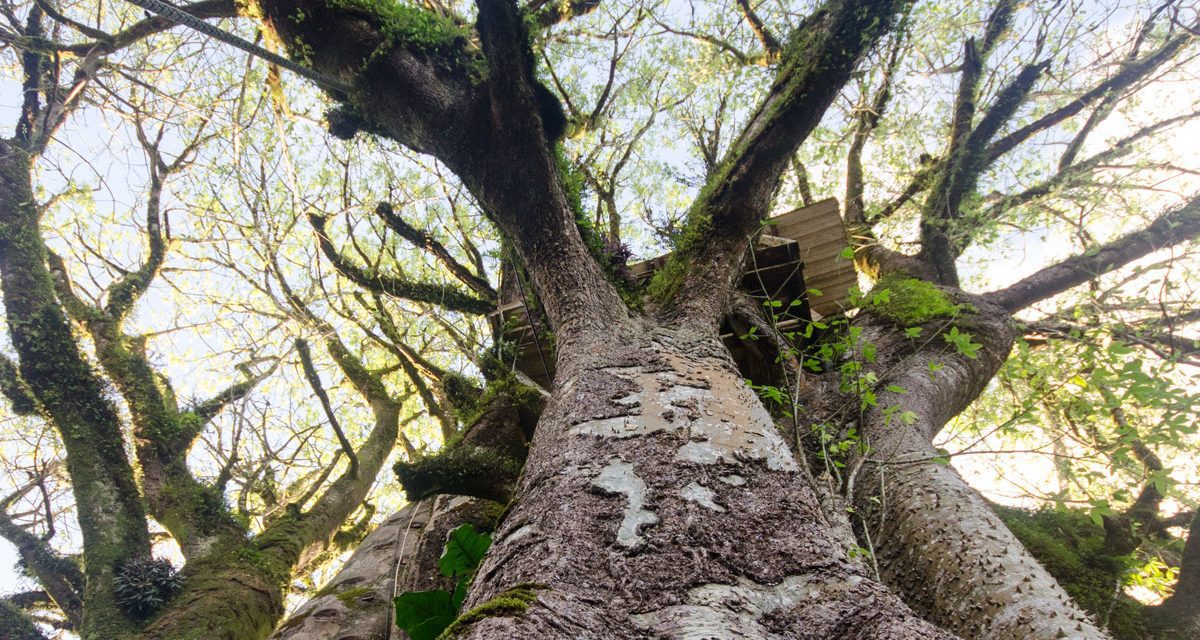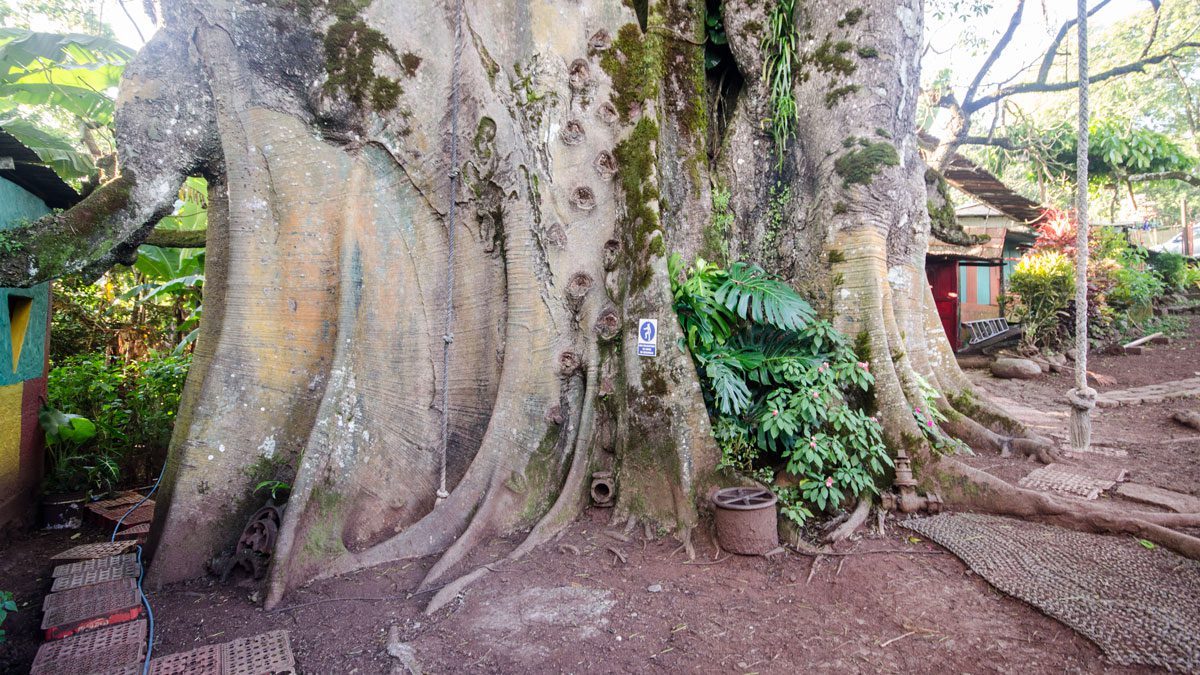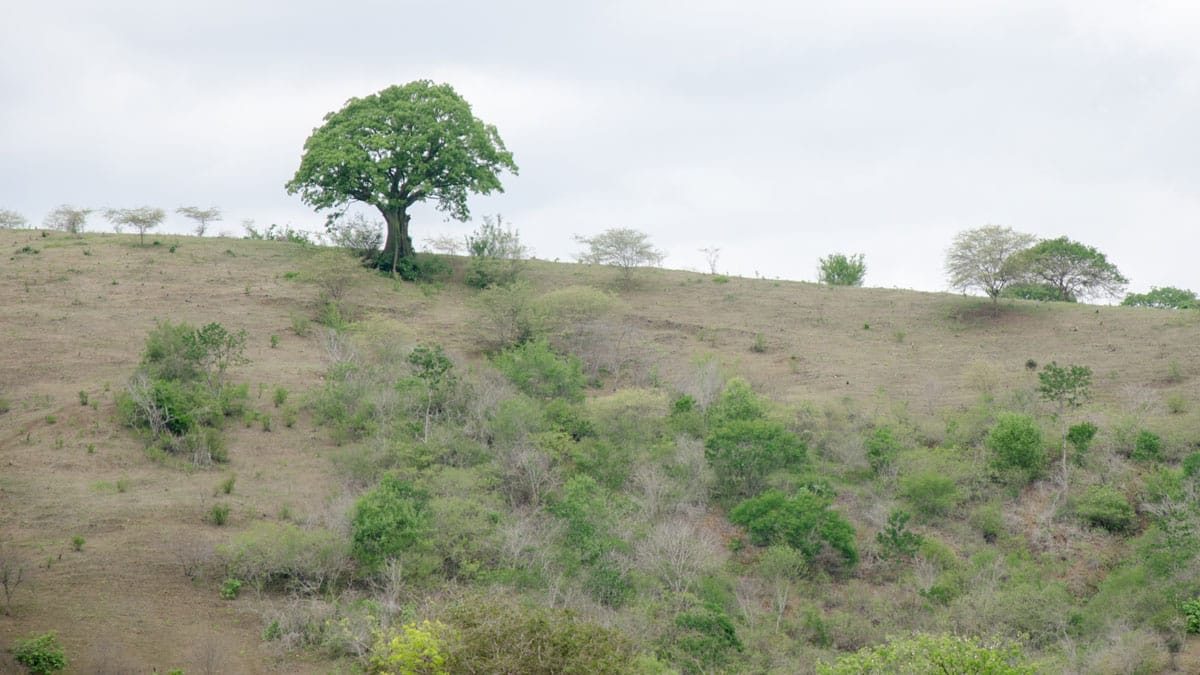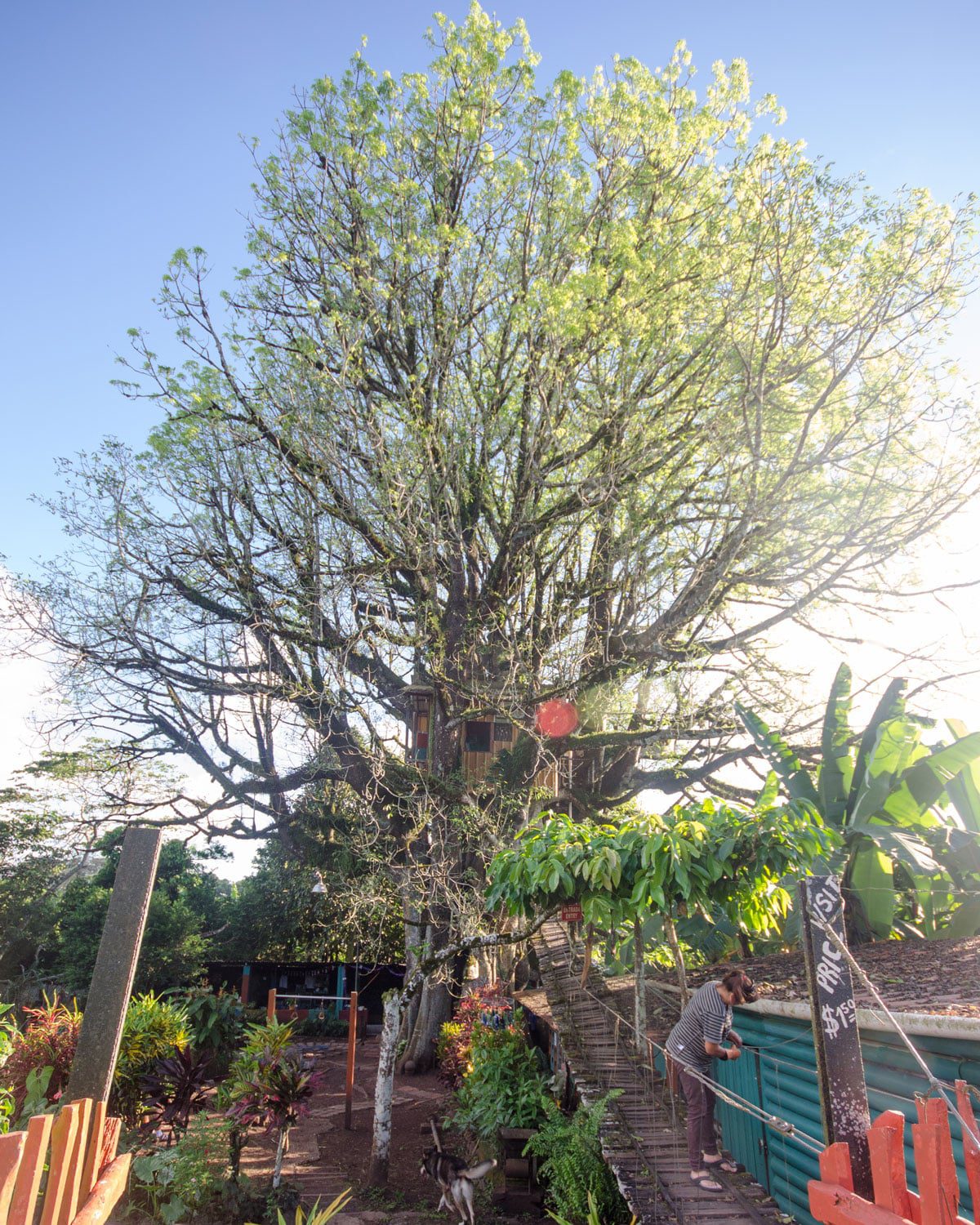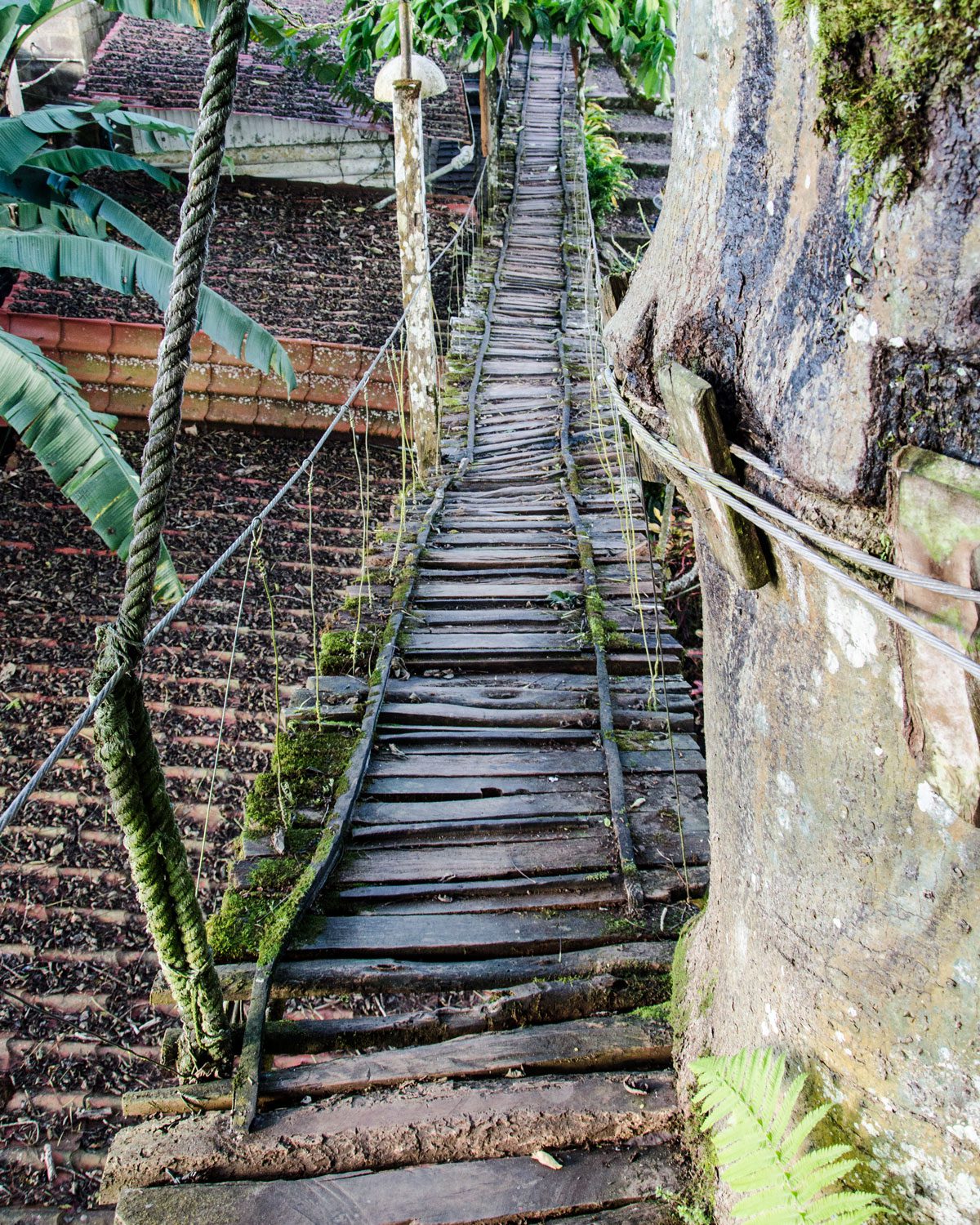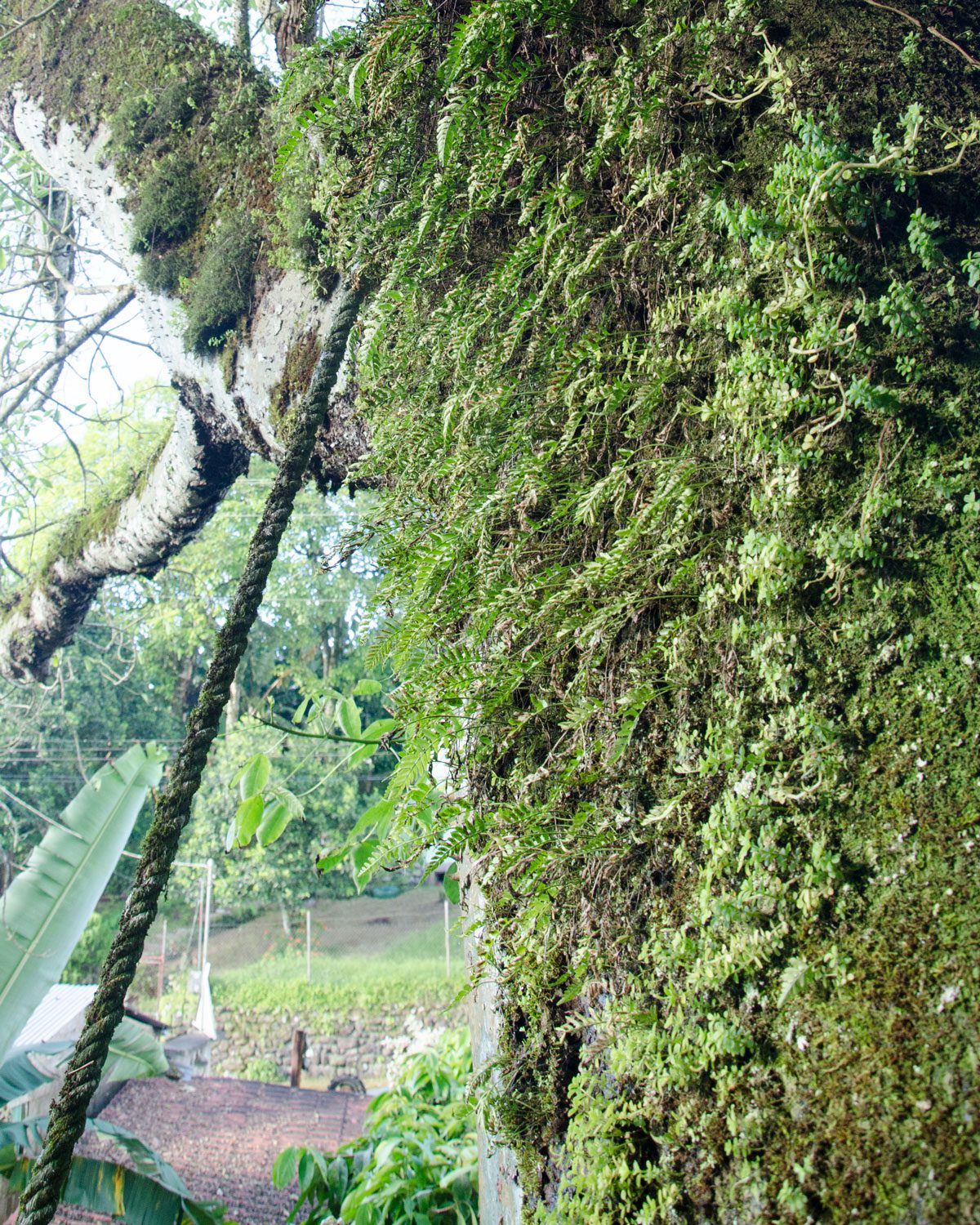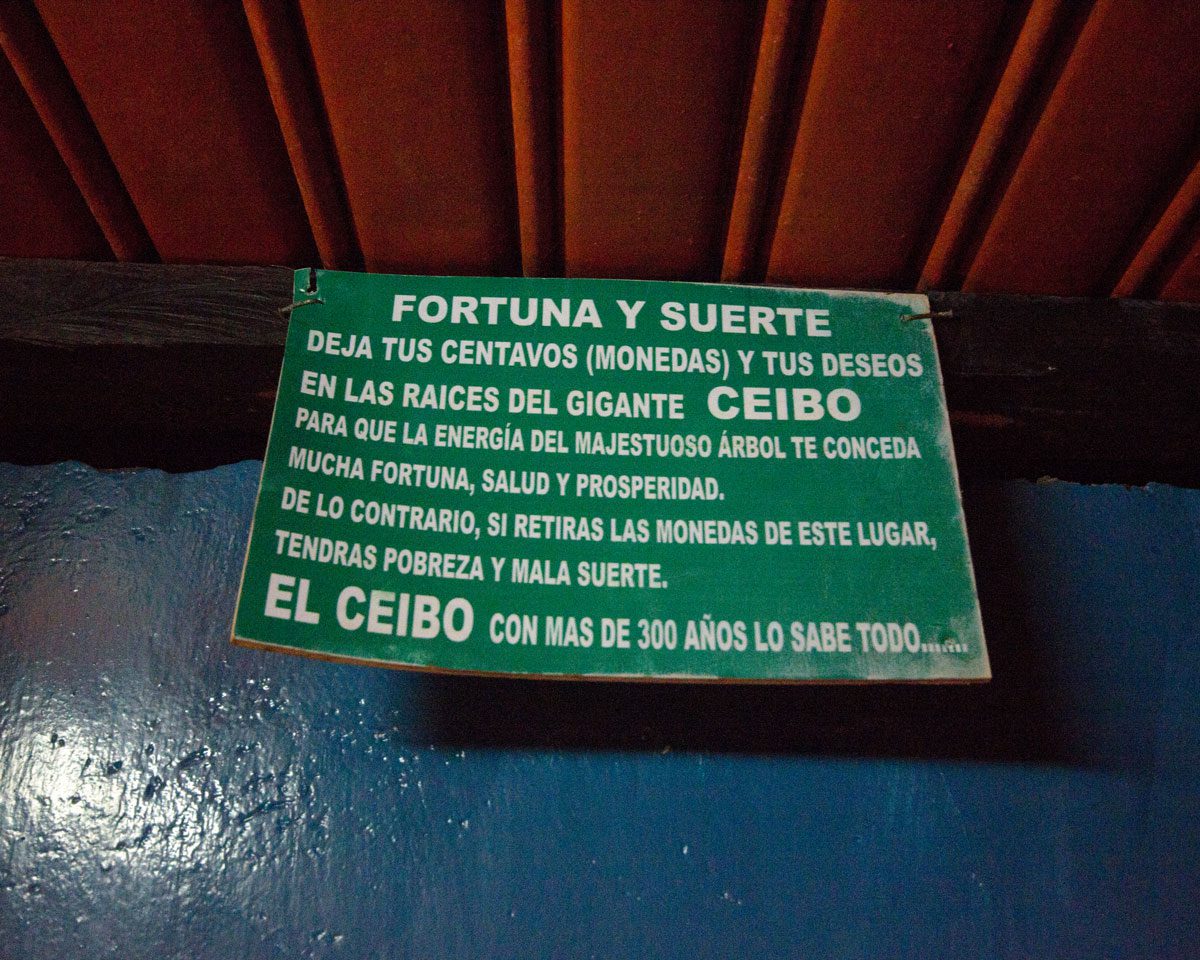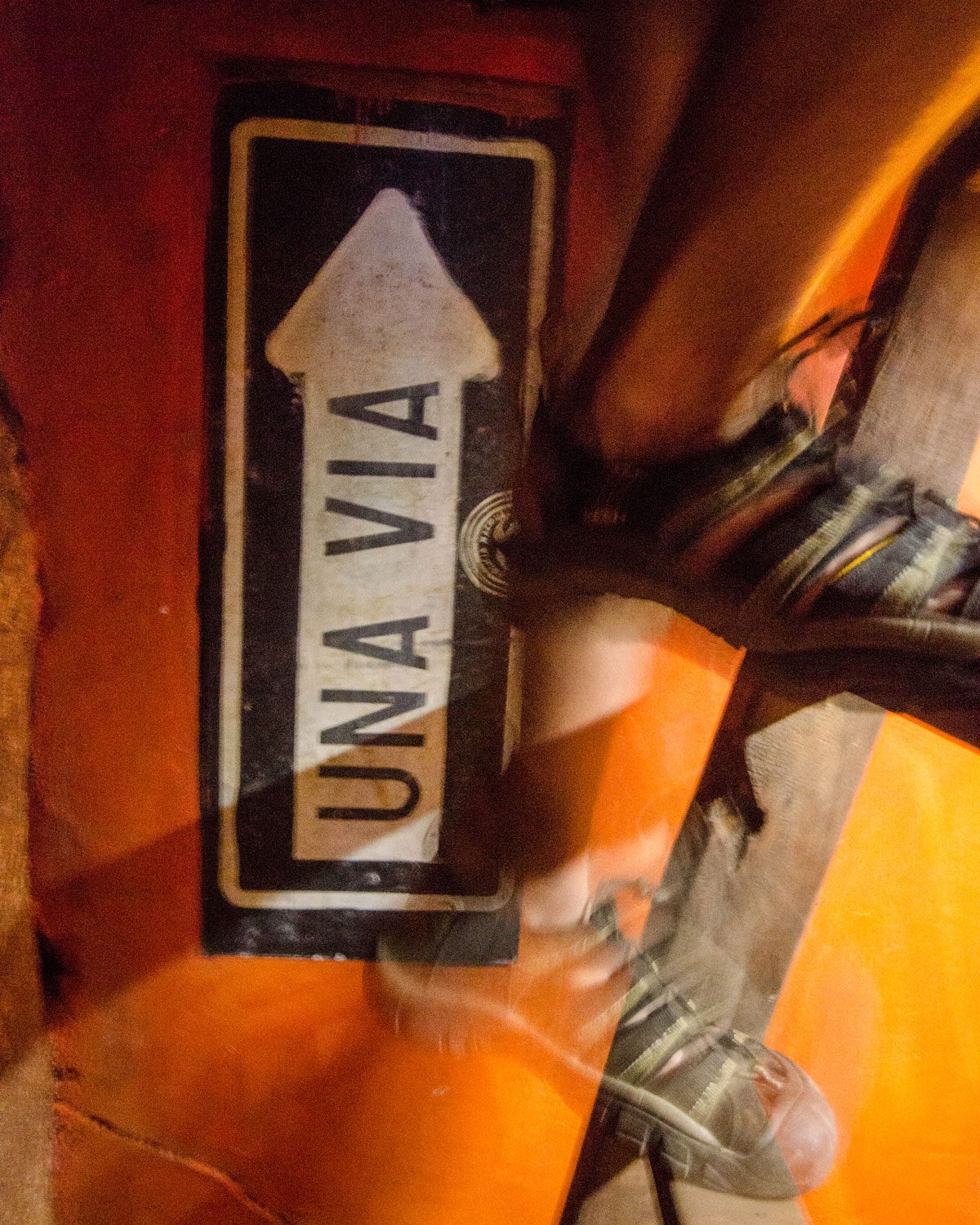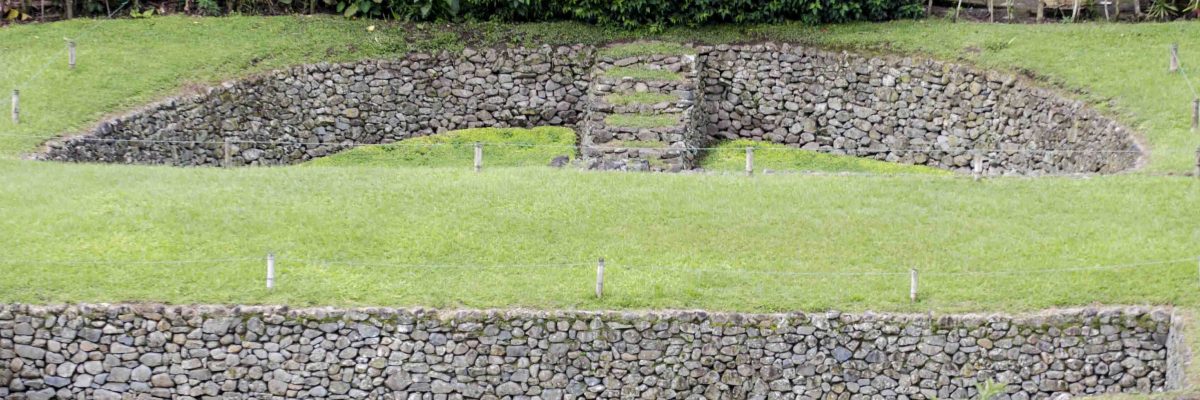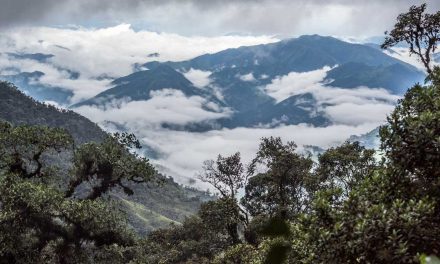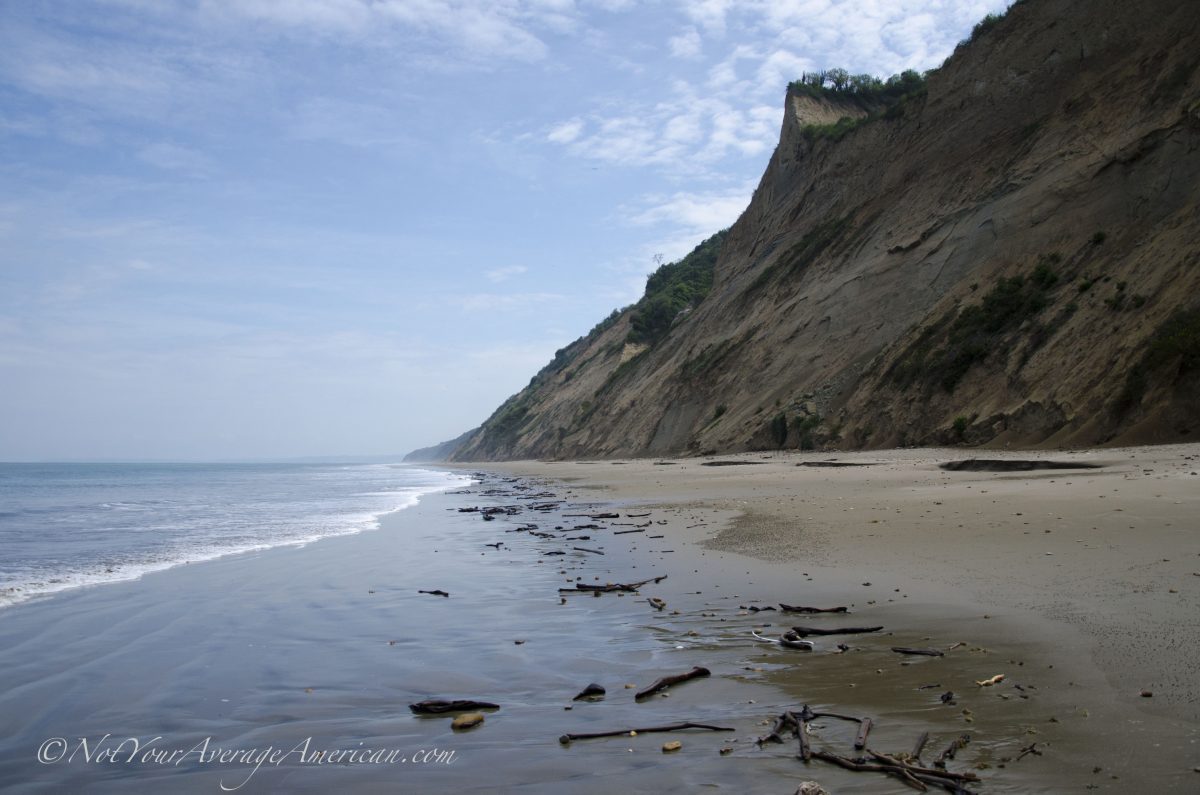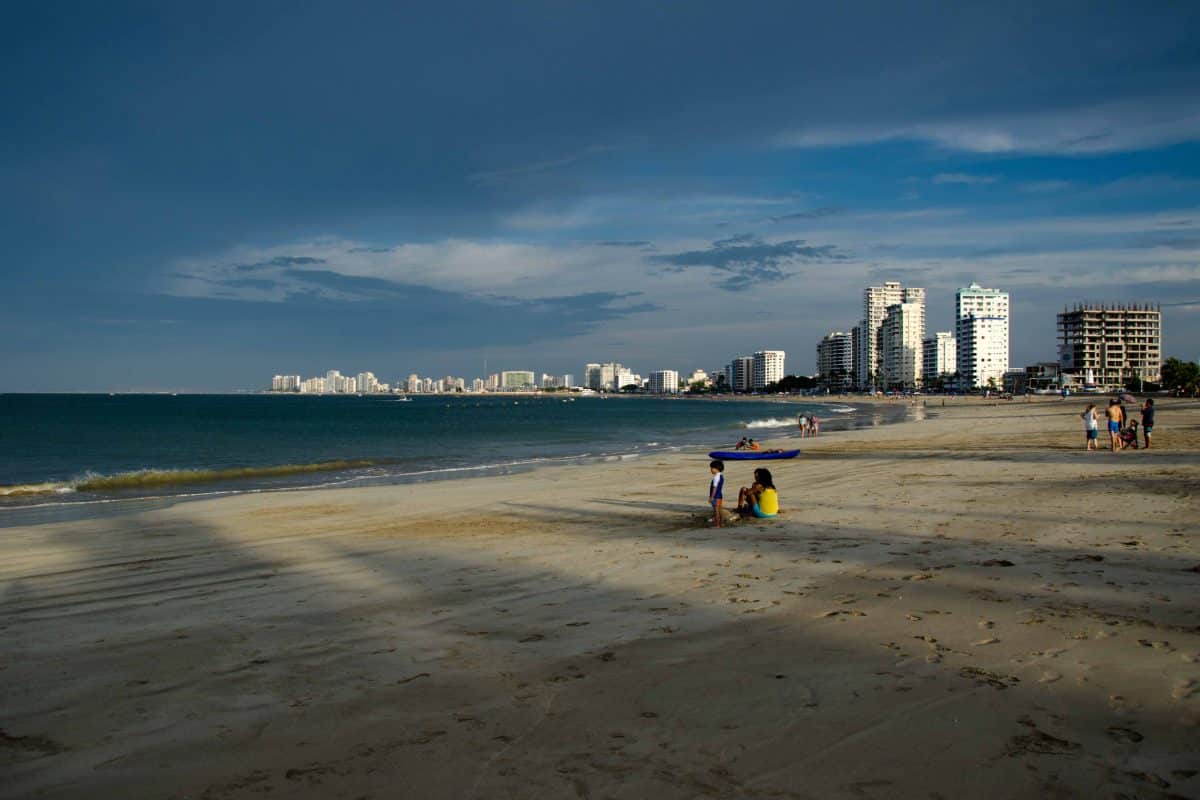As responsible travelers evolve, so do the stories we share.
This article is part of our living archive — trusted content we continue to care for.
First published on June 28, 2018 • Last updated on June 28, 2018.
According to the Botanical Garden in Quito, this Galapagos Ceibo is the widest and oldest ceibo tree in the entire nation of Ecuador. Alongside other Galapagos treasures, it is an official icon of Ecuadorian cultural heritage.
Its width is an easy matter to settle. The grey-green trunk’s circumference measured 63 feet (19.25 meters) in 2012. But if you include its wide, flangelike roots in the measurement, it is a grand 109 feet (33.5 meters) wide! Its exact age is a little harder to calculate, but scientist estimate that it is about 300 years old. While this sounds impressive, it is hard to believe that other ceibos on the mainland are not as longlived.
The History of the Oldest Ceibo in the Galapagos
This specific variety, Ceiba pendrata, produces a fine cotton that Ecuadorians once used for stuffing pillows and mattresses. Its presence on the island would have been a blessing to any colonists looking for a reminder of home. For centuries, Ecuadorians have protected the ceibo wherever it grows. Even today, as coastal dry forests are slashed and burned, ceibo trees remain alone and in pairs, standing guard like soldiers on the heights on coastal hillsides. The coastal ceibo has adapted to periods of drought, appearing dead in the dry season and sending a spectacular display of fresh green leaves and bright white flowers after heavy rains.
The Legend of MJ Cobos
According to local legend, Cobos was a harsh taskmaster. His workers were little more than slaves. Most were likely descendants of the military prisoners placed on Floreana Island after attempting a coup in 1832. Unable to survive on Floreana, they dispersed throughout the archipelago, including San Cristobal.
Cobos was a cruel man who harshly punished his workers for the slightest transgression. Those punishments took place under the canopy of the ancient, lone Ceibo. It is rumored that some men even died from hanging from its branches.
Cobos loved the fruit of the guayaba, a tree not native to the Galapagos. He planted many guayaba trees. However, he never allowed his workers to eat the fruit. One day, a pregnant woman living on his land could smell the delicious, sweet aroma of guayaba wafting on the breeze. Her husband stole a single sticky, sweet guayaba to satisfy her craving. When Cobos discovered his transgression, he had the man whipped more than 200 times, torturing him until death. His wife predicted that the seductive guayaba tree would plague the land. She then cursed Cobos, damning him to a terrible death. A few days later, the workers revolted and murdered Cobos with machetes. Today, the Galapagos highlands are overrun with non-native guayaba trees.
The Oldest Ceibo in Modern Times
The current owner of the Galapagos ceibo is a much gentler man than Cobos. Jose Luis Cornejo, a native of Quito, Ecuador, had always dreamed of owning a tree house. While visiting the Galapagos, he fell in love with this lone ceibo tree. He decided to buy the land despite its sordid past.
Soon after, Cornejo built a small house in the canopy of the 40-meter high tree. He intended it to use the small house as a weekend escape for his family. His children, and then grandchildren, played in its shade, climbed its branches and slept in the small treehouse. However, so many people were intrigued by the treehouse in the legendary ceibo that they kept asking to see it. Cornejo decided to open his weekend home for tours.
Touring the Galapagos Ceibo
On the day we arrived to tour, the sky was bright blue and dotted with wispy clouds. The air was sticky and full of buzzing, biting mosquitos. But that didn’t stop us from exploring the grounds.
First, we walked around the tree, taking in its huge expanse. Pictures don’t do it justice as few camera lenses can take in its entire shape and size without distorting its true aspect. The wide trunk is scaly with age, partially covered with velvety, dark green moss and spots of gray-white lichen. A few plants grow within the folds of its roots and ropes hang, inviting adventurous visitors to clamber up its sides.
We visited when the tree was just sending out new growth, its branches barely touched by brilliant, spring-green leaves. They invited us to explore further.
We headed to the treehouse entrance, a rickety bridge leading up to the main treehouse from the ground level. It reminded me of the Swiss Family Robinson treehouse at Disneyland, though more authentic and not nearly the same size. The little room was underwhelming and the view from its height was disappointing, an unremarkable glimpse of the tiny community of El Progresso and the garden below. However, the treehouse didn’t stop there.
It’s Not the Upstairs But the Down
It is an amazing feeling to stand among the branches of a huge ceibo, even when the surrounding view is less than dramatic. Old trees have an aura about them and this one was no different. Small ferns and dark, old moss clung to the thorny trunk at this height. Like iconic destinations in the Galapagos that are experiencing high visitation, this old tree felt tired but hopeful.
Despite its seeming fatigue, the ceibo invited us to explore its depths. A step ladder offered safe passage down through the interior of the tree itself.
A dim, yellow, electric light barely illuminated the cavern-like space. Modern and old-fashioned artifacts stood side by side. A large street sign pointed “One Way” back up the ladder. A decades-old lantern glowed red in the corner. A sign posted above a niche that looked as if it should hold an image of the Virgin Mary rather than an unlit lantern and oddly shaped shells and rocks read:
Fortune and Luck
Leave your pennies (coins) and your wishes in the roots of the giant ceibo in order that the energy of this majestic tree grants to you great fortune, health and prosperity.
To the contrary, if you take coins from this place, you will be poor and have bad luck.
The Ceibo with more than 300 years knows all…
Of course, we left a donation. Each of us, in turn, pressed small coins into a dirt wall dotted with other coins, some from the United States and many from other countries. However, the wall was not very full so someone obviously did not listen to the warning of the All-Knowing Ceibo. What tales it could tell indeed.
Tips For Your Trip
If you plan to visit the Oldest Ceibo Tree in Ecuador, a few items will make your visit more enjoyable. Bring your bug spray. While mosquitos are not a year-round problem, it is better to be safe than sorry. Bring realistic expectations. This is a small, family-run place without a lot of bells and whistles. There may or may not be food or drink for sale. There will be an entrance fee of $1.50 per person. While called the Casa del Arbol, the treehouse itself is very small. But the combined history and the tree itself will hopefully be worth your while. If you are limited in time on San Cristobal, skip this destination
The Oldest Ceibo Tree in Ecuador
Information for your Trip
- Entrance fee: $1.50 per person
- Overnight stay: $25.00 per person
- Taxi from Puerto Baquerizo Moreno to El Progresso – approximately $3; or ask to include a visit on your day trip to Puerto Chino.
- Open from 9:30 am to 12:30 pm and 1:30 pm to 5:30 pm
Sources for the article:
- https://valentedelmar.com/2018/01/27/mitos-y-leyendas-de-ecuador-11-leyendas-de-galapagos/
- http://www.sancristobalgalapagos.gob.ec/web/index.php/san-cristobal/atractivos-turisticos/item/120-la-casa-del-ceibo
- https://www.usfq.edu.ec/publicaciones/para_el_aula/Documents/para_el_aula_23/pea_023_0019.pdf

